The country is celebrating today the Air defense day. We’ve talked to Said Aminov, a blogger and the editor in chief of the “Vestnik PVO” magazine about the Russia’s air defense development trends.
— You have been moderating the «Vestnik PVO» site for 10 years now, haven’t you?
— Almost for 16 years now, since May 1999. It was a web site at first, then a blog. At the moment there were a lot of people talking about military equipment, mainly about aviation and armored vehicles. The Air defense was on the sidelines of the space-rocket equipment and they would not discuss it widely. Since I examined the subject at the Reserve officers training division of the Bauman MSTU and am a bit familiar with it, I made up my mind that was the subject to be studied. I was aware that the USSR newly made air defence system is multisided, interesting and provided protection for our big country.
In addition the AD is the national defense cornerstone. This is worth working at for the country to sleep peacefully.
Air defense in the present day local wars is the point that indicates a state’s consistency or the lack of it. This is due to the fact that all western coalitions tend to crack the imperfect AD and force their requirements. Availability or lack of the AD determines the international conflicts' outcome. Our country is the skill center in the air defense and missile defense (MD). That is the knowledge to be expanded and improved.
— What is your opinion of qualitative and quantitative developments that have occurred since then? Are they good or bad? What is the reason of it?
— In fact, there was a serious breakthrough within three five-year' periods. It was generally characteristic of the Russian defense industry and of the Armed Forces branches. We are now witnessing the army and the industry rebirth.
At the turn of the 90-ies we could have developed the systems of new generation but there was not enough money to operate them. In the 2000-ies the defense industry managed to survive by way of exporting the systems originally designed for the national Armed Forces and provided many countries of the world with the systems that were in the operational service with the Russian army. Note that a lot of AD systems remained in the Ukraine and Belarus territories after the USSR dissolution. The process of hiring away the experts was well under way but the industry was surprisingly capable of developing competitive samples of the AD equipment.
We have been observing the mass production and putting into service the new equipment in the Russian army for the last 5 to 6 years now. Note that brand new systems first enter the service in Russia then they are offered for export.
As with the C-400 «Triumph» air defense missile system (ADMS). That is the key point. The world is moving forward. If the offensive means get upgraded, the defensive means must get upgraded too.
Just read the news. They say the surface-to-air missiles production in 2015 will be three times as large as that in 2014. Sure to be a revolutionary step. According to open sources, in the JSC Concern «Almaz-Antey» sales structure shipments within the state defense order have prevailed over export shipments for the last few years.
— Does it mean the situation is getting better?
— It sure does. We have switched from export samples development to serial supply of new generation systems, profoundly upgraded for the Russian Armed Forces.
— What is the reason?
— First of all, Russian Federation political authorities had a very practical view upon the Armed Forces technical condition and they could clearly see that the present day threats could be treated just with modern and home-made armament. As long as the international political situation is getting worse, the authorities seem to have taken that decision long time ago. The JSC Concern «Almaz-Antey» foundation was a right decision. The Concern was the first one vertically integrated in the engineering and electronic industry. That was the air defense manufacture unification and reservation.
Another good point is that our country has a few skill centers in the AD area.
They are the NPO «Visokotochnie kompleksi» which includes the JSC KBP named after academician A. Shipunov, who developed the famous «Pantsir» Anti-aircraft missile and gun system (AAMGS); the JSC KBM in Kolomna that develops the «Igla» and «Verba» man-portable air defense systems (MPADS). Thus, I can conclude that Russia can now make a wide line of the AD means having no analogues in the world.
— Information agencies reported yesterday that in 2015 the army is going to accept into service a long-range missile for the S-400 «Triumph» capable of destroying the mid-range ballistic missiles in the near space. Earlier they said that a similar range missile for the S-300B4 battle air-defense system had been tested. What are the operating tasks of those missiles?
— Back to history. There were two branches of the air defense artillery in the USSR. They were: first, national air defense artillery that protected the most important administrative, state and military objects; second, the Armed Forces branch that was to cover various level battle formations, from battalions and brigades to armies and divisions. Thus, they developed the Air Defense branch-oriented systems. There were two concurrent engineering schools. The first the «Almaz» school guided by Raspletin-Bunkin which developed the following AD systems: the famous «Berkut», the Moscow Air Defense system, the S-25, S-75, S-125 AD systems and the S-300 «P"systems.
There was also the Research institute of electro-mechanics headed by Veniamin Efremov. They developed army air defense systems (Ground Forces Air Defense). It was there where they developed the long-range S-300 «B» system.
— What was the difference between them?
— Both systems are track-mounted but the S-300P was mostly designed as an antiaircraft defense complex, against air targets such as fighter planes, bombers, reconnaissance planes, long-range radar detection planes. The army S-300B sample besides the anti-aircraft defense was suited for short-range and midrange missiles interception. Efremov, the uniquely talented developer, accomplished the task in the late 80-ies. When the S-300B complex was put into service in the late 80-ies, it was the first one in the world capable of intercepting such targets. Neither the American «Patriot», nor the S-300P had similar characteristics. The S-300B developed by Efremov is actually the anti-missile system of the theatre of war.
— Later, in the 90-ies, the S-300B system was in the sidelines but to its developers' credit, they kept on modernizing it. After a few upgrades the S-300BM «Antey-2500» export version was made. It had the 250 km effective range of fire.
They were simultaneously developing the heavily upgraded S-300B4 version for the Russian Armed Forces. Its missiles can hit the targets at up to 400 km distance which has become known not long time ago.
The S-300P system was upgraded too which resulted in producing the S-300PMUZ «Favorit» with the 240 km effective range of fire.
When they were developing the S-400 «Triumph» system, developers assumed it would be able to launch a few types of surface to air missiles developed by the MKB «Fakel». They are the mid-range 9M96 missile (effective range of fire is up to 124 km), the basic 48H6 missile, which fits both the «Favorit» and the «Triumph» (E3 for the export). They planned to develop the 40H6 missile to fit the S-400 with the 400 km effective range of fire. The mass media now say they are to finish the tests soon and have started the trial production.
It is very important that we have developed the S-300B4. The system made by Efremov is already operated. It’s been in service in the Ground Forces for 3 years now. Furthermore, they supply the light export versions to Venezuela and Egypt and also propose it to Iran.
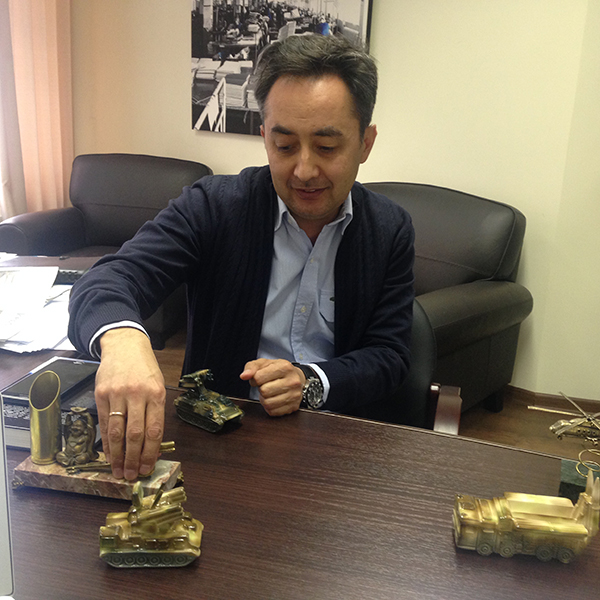
— Why is the news on fitting the «Triumph» system with the long-range missile is so important?
— Because the «Triumph» is becoming a full-scale complex at last. The system is going to protect the civil and military objects with the missile. The only existing analogue is the S-300B4 system.
— They are going to accept into service the advanced S-500 «Prometey». What new features does it have and what kind of tasks is it going fulfill? Is it our response to America’s threat of the Prompt Global Strike?
— It appears that on one hand the rival is moving forward by developing the precision weapon elements, which can be applied on the delivery aircraft (airplanes, bombers, unmanned flying vehicles). They develop ground-launched and sea-launched cruise missiles that can hit our territory. On the other, the armament moves to near space.
Near-earth satellites or coming from the space objects are the task for next generation systems.
The S-500 task is to provide antimissile and antisatellite defense of our territory. The requirements for radar aids and means of destruction are stricter for it’s got to be high-speed interceptor missiles, capable of knocking out the targets in the near space.
— Are there any foreign Air defense equipment samples that might be compared to the ones made in Russia? (the S-400 «Triumph», S-350 «Vityaz», the «Pantsir-S» missile systems). What are our strong and weak points?
— There are no analogues of wide line of AD means that are produced in our country, if compared to single countries and international concerns. On the other hand, there is a fire-range based rating system. Concerning the long range systems our main competitor is the American «Patriot», Chinese dishonest copies of the Russian AD systems (they even try to upgrade them) and the European MBDA concern with the «Aster-30» system.
Concerning the long-range systems capable of hitting the ballistic targets, I suppose the main competitor is the US made THAAD Air defense system but it is export prohibited. Israel has the «Arrow» air defense system (it is produced with considerable financial and engineering support of the United States) but is also export prohibited.
The mid-range missiles competition is rather serious for the «Vityaz» and «Buk» analogue is the European «Aster-15» and many others. But, in fact, they have no similar long-range systems because they just do not need them. However, they have an enormous choise of short-range systems with effective area of 50 km.
But the Russian «Pantsir» system remains a favorite for it carries both missile and artillery armament as well as radar location means. The effective range of fire of missile armament is 20 km, — that is what the Europeans don’t have.
As for the short-range systems, we have the «Sosna», «Tunguska» and «Tor» systems to offer. The «Iron dome» is a rather interesting Israeli system. Though it is local and first of all designed for operating in Israel. That is a cheap AD mean to fight cheap targets.
Further, the man-portable air-defense systems. There are a lot of samples to choose from but the Russian «Igla-S» is one of the best systems of the previous generation and they export it actively. They started putting into service in the Russian army the new generation «Verba» complexes. The complex is rather new that’s why there is no information about it yet.
— What kind of equipment does Russian air defense need today? Perhaps some kind of supporting systems (radar locator systems, communication systems etc.)?
— The press says it is the moment when they started upgrading the radar locator systems. The new «Nebo-U» station, for instance. That is a modern radio locator complex operating in all frequency bands and capable of detecting all kinds of targets including low observable air targets. As for the computer-aided control systems, the new «Polyana-DM4» for the Ground Forces has started entering the service.
It is just the scope of supply that is in question. We’ve got to meet the quantity requirement for we have no trouble with the problems with the stock-list ant the products' quality.
We must produce the necessary amount of equipment to make the full-scale air defense system.
We are doing our best to accomplish that task.
We are glad to know that the «Almaz-Antey» Concern is constructing three infrastructure facilities to fulfill the task. The first facility, which is actually ready, is the North-West regional center in Saint-Petersburg, basing on the Obukhov State Plant site where most enterprises developing new air defense equipment are concentrated. The second site is Nizhny Novgorod engineering works where they are constructing an assembly facility of the new generation air defense equipment. In Kirov they are constructing an assembly factory to produce antiaircraft guided missiles.
They are going to be the three most advanced factories producing armaments for the new generation systems.
They are upgrading the acting manufacturing facilities within the Federal purpose oriented program «Development of the Defense-Industrial Complex». It is the scheduled production that is in question now. Our country is large and we’ve got to expand the production capacity.
— What is your opinion on the decision to incorporate the Air Force and the Aerospace Defense Forces into the Airspace Forces?
— I suppose that creating the Airspace Forces is a tribute to the time. Space threat is real, the Global Prompt Strike threat is absolutely real. The United States do not hide the fact of developing the corresponding means. I don’t know the way it’s being done but on the whole it’s a positive thing that we are creating forces equipped with all the means necessary. The point is that the equipment has got to be tested in time, be put in mass production and placed on site; the personnel is to be trained.
It’s notable how quickly the air defense group was deployed in the Crimean peninsula.
The group consists of various armament but the concept is close to that applied on the mainland, i. e. the S-300PM and the short range «Pantsir-S» systems.
— This year in September they will conduct joint CIS air defense exercise on the Russian and Kazakhstani territories «Commonwealth in-arms-2015». It’s quite clear why it is good for them but why is it good for us?
— The question of integration of former USSR republics remains on the surface. The present situation shows the importance of military component of the union. The defensive systems unification shows that first of all, the coalition solves the problem of defense. The exercise will show the countries have equal view upon air defense and the single information space approaches. There is also a question of modern Russian systems supplies to these countries.
The first step is to deliver of the S-300P and the «Tor» short-range systems to Belarus. We are likely to get the new contracts with Belarus in the nearest future.
In addition, our systems are deployed in the military base in Armenia and are supplied to the Armenia armed forces. Azerbaijan is also an active buyer of the Russian systems, including the S-300P «Favorit» MUZ. Note that, the engineering capacity of Belarus is very high, including the air defense systems' and complexes' components. Technical integration within the Common state is vitally important, including for the purpose of import substitution.
Interview by Daria Barinova


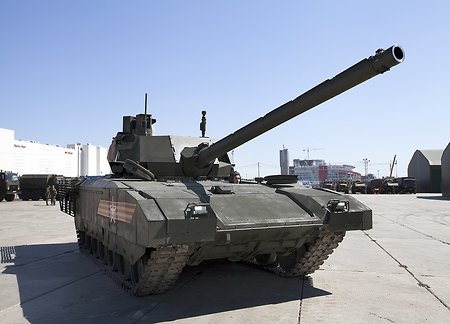
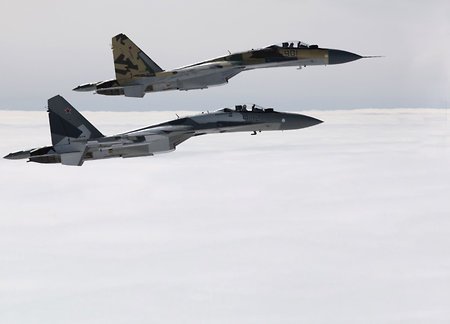
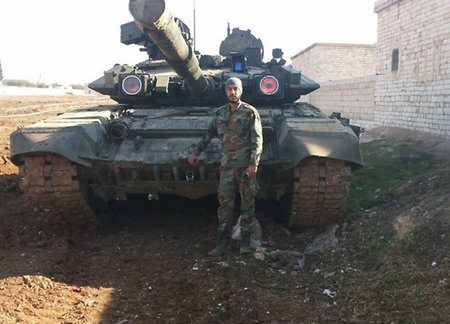
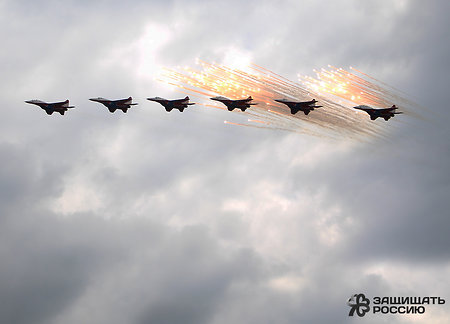

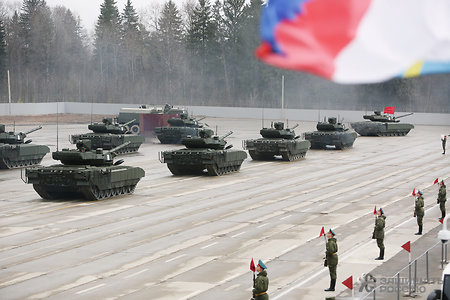
You may also like
Orphus system